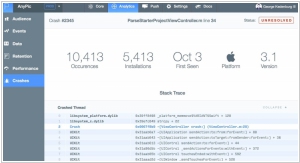Microsoft Azure vs Parse
August 19, 2023 | Author: Sandeep Sharma
21
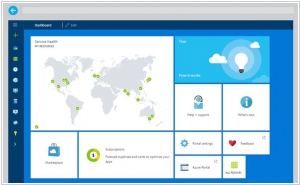
Microsoft Azure is an open and flexible cloud platform that enables you to quickly build, deploy and manage applications across a global network of Microsoft-managed datacenters. You can build applications using any alternative language, tool or framework. And you can integrate your public cloud applications with your existing IT environment.
Microsoft Azure and Parse are both cloud platforms that offer services for developing and deploying applications, but they differ in their approach and target audience.
Microsoft Azure is a comprehensive cloud computing platform provided by Microsoft. It offers a wide range of services, including infrastructure as a service (IaaS), platform as a service (PaaS), and software as a service (SaaS). Azure provides a complete ecosystem for building, deploying, and managing applications, with a strong focus on enterprise-grade features, scalability, and integration with other Microsoft tools and services. It offers a broad range of services and solutions for various industries and workloads.
Parse, on the other hand, is a mobile application development platform that simplifies the process of building, deploying, and managing mobile apps. It provides a backend-as-a-service (BaaS) solution, offering features such as data storage, user authentication, push notifications, and cloud functions. Parse is specifically designed for mobile app developers who want to focus on building the front-end of their applications without worrying about server infrastructure and backend complexities.
See also: Top 10 Mobile App Builders
Microsoft Azure is a comprehensive cloud computing platform provided by Microsoft. It offers a wide range of services, including infrastructure as a service (IaaS), platform as a service (PaaS), and software as a service (SaaS). Azure provides a complete ecosystem for building, deploying, and managing applications, with a strong focus on enterprise-grade features, scalability, and integration with other Microsoft tools and services. It offers a broad range of services and solutions for various industries and workloads.
Parse, on the other hand, is a mobile application development platform that simplifies the process of building, deploying, and managing mobile apps. It provides a backend-as-a-service (BaaS) solution, offering features such as data storage, user authentication, push notifications, and cloud functions. Parse is specifically designed for mobile app developers who want to focus on building the front-end of their applications without worrying about server infrastructure and backend complexities.
See also: Top 10 Mobile App Builders
Microsoft Azure vs Parse in our news:
2023. ChatGPT comes to Microsoft Azure
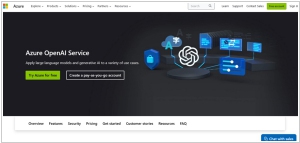
Microsoft has officially announced the general availability of ChatGPT, which can now be accessed through the Azure OpenAI Service. This service, tailored for enterprises, offers a fully managed platform with additional governance and compliance features to ensure businesses can leverage OpenAI's technologies effectively. ChatGPT now joins a lineup of other OpenAI-developed systems already provided via the Azure OpenAI Service, including the text-generating GPT-3.5, code-generating Codex, and image-generating DALL-E 2. Microsoft maintains a strong collaborative partnership with OpenAI, marked by substantial investments and an exclusive agreement to commercialize OpenAI's AI research.
2021. Microsoft launches Azure Container Apps, a new serverless container service
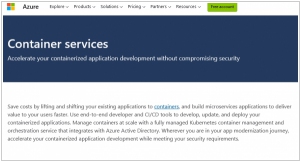
Microsoft has announced the preview launch of Azure Container Apps, a new serverless container service that is fully managed and complements their existing container infrastructure services such as Azure Kubernetes Service (AKS). Azure Container Apps is designed for microservices and offers rapid scaling based on HTTP traffic, events, or long-running background jobs. It shares similarities with AWS App Runner, one of Amazon's serverless container services focused on microservices. Google also provides container-centric services, including Cloud Run, which is their serverless platform for running container-based applications.
2019. Microsoft launched cloud APIs for form and handwriting recognition
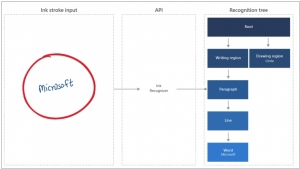
Microsoft has unveiled a range of new cognitive services on its Azure Machine Learning cloud platform, catering to various document-related needs and offering enhanced capabilities. Among these services are the Ink Recognizer and Form Recognizer, which enable the conversion of handwritten text and paper documents into digital text and data. Additionally, the Conversation Transcription service facilitates the transformation of phone dialogues into text, with the ability to identify the author of each phrase. Another notable addition is the Personalizer service, which delivers personalized recommendations to website and online store visitors based on their behavioral patterns. Furthermore, Microsoft has introduced a user-friendly visual interface for creating machine learning models, empowering marketers and other professionals to engage with machine learning. By simply uploading the database and specifying the desired predictive parameter, users can explore the potential of machine learning in their respective fields.
2019. Microsoft launched own Windows Virtual Desktop service
Microsoft has recognized the potential of offering virtual desktop services independently, despite its prior reliance on cloud partners. The introduction of the Windows Virtual Desktop service, now accessible for companies on the Microsoft Azure cloud platform, allows the installation of Windows, Office, and other software licenses on the cloud instead of employees' individual computers. Consequently, employees can access and work with their software through a virtual desktop. This approach offers several advantages. Firstly, it enables even older Windows 7 computers to operate efficiently while providing the benefits of Windows 10. Secondly, it offers convenience to administrators in terms of creating and maintaining new work environments while ensuring security measures. The Windows Virtual Desktop service itself is free, with costs incurred only for additional Azure resources consumed, such as memory and CPU time.
2018. Microsoft Azure gets new high-performance storage options
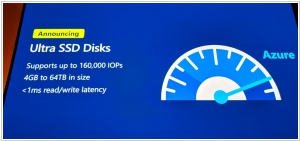
Microsoft is introducing a range of new storage options for Microsoft Azure, with a particular focus on scenarios that require high disk performance. One notable addition is the public preview of Azure Ultra SSD Managed Disks. These drives are designed to deliver extremely low latency, making them well-suited for workloads that demand quick response times. Additionally, Standard SSD Managed Disks have transitioned from preview to general availability within just three months. Moreover, Azure now offers expanded storage capacities of 8, 16, and 32 TB across all storage tiers, including Premium and Standard SSD, as well as Standard HDD. Another new addition is Azure Premium Files, which is currently in the preview stage. This service is also SSD-based and aims to provide improved throughput and reduced latency for SMB operations within Azure Files, a familiar cloud storage solution that uses the standard SMB protocol.
2017. Microsoft launched new archival storage option for Azure
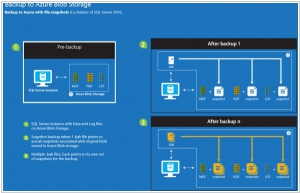
Microsoft has recently unveiled a new storage option, known as Azure Archive Blob Storage, for its cloud computing platform Azure. This addition offers developers a more cost-effective solution for storing large volumes of archival data, including logs, raw camera footage, audio recordings, transcripts, medical documents, and images. The key distinction between the "cool" and "archive" tiers lies in the pricing structure and accessibility of the data. While archival storage comes at a lower cost, the retrieval expenses are higher. Additionally, data stored in the archive tier is not readily available for immediate access. The stored blobs undergo a process of "rehydration," which can take up to 15 hours for blobs holding less than 50GB of data. It is worth noting that Amazon Glacier and Google Near, which provide similar cold storage services, have been established options for several years.
2017. Microsoft launches new tools to help enterprises move to its Azure cloud
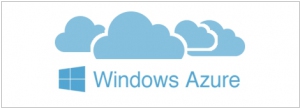
According to Microsoft, a significant majority (80 percent) of the companies it engages with express a desire to adopt a hybrid cloud approach. In response to this demand and to facilitate their transition to the company's cloud platform, Azure, Microsoft is introducing a range of new tools. One of the key offerings is the Cloud Migration Assessment service, which enables companies to assess their current IT infrastructure and receive an estimate of the costs associated with migrating their services to Azure, along with potential savings. Moreover, Azure users now have the opportunity to receive a discount when they transfer their Windows Server licenses (with Software Assurance) to Azure. Known as the Azure Hybrid Use Benefit, this benefit can lead to savings of up to 40 percent, making it more enticing for existing Windows Server users to shift their workloads to the cloud. Additionally, for those interested in making this transition, the Azure Site Recovery (ASR) tool is receiving a minor update. While primarily designed to assist enterprises in coordinating their disaster recovery plans, it can also be leveraged for migrating existing virtual machines to Azure.
2014. Mobile app builder Parse adds crash reporting and local datastore
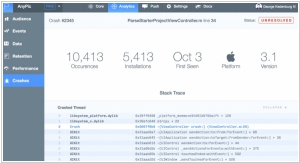
Parse, the mobile development platform that was acquired by Facebook last year, provides developers with a comprehensive set of features. However, one crucial aspect that was missing until now was crash reporting. While Parse offers an analytics service, developers had to rely on third-party tools to track app crashes. Fortunately, today, this much-needed feature has been made available. Another exciting addition is the support for Parse's local datastore on iOS, which was previously only available for Android. This framework enables developers to facilitate the use of critical app features even when users are offline, making it easier to deliver a seamless experience.
2014. App builder Parse adds A/B testing for push notifications
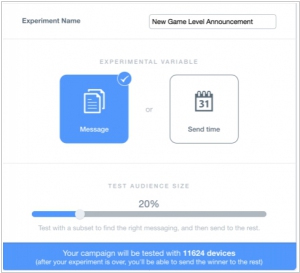
The latest feature being introduced by Parse, a subsidiary of Facebook, is called Parse Push Experiments. This feature is specifically targeted towards marketers and developers utilizing the Parse SDKs in their applications. It enables them to conduct A/B tests on various messages and timings for push notifications sent to mobile devices. The update seamlessly integrates with apps that are already using the most recent versions of the Parse SDKs, requiring no modifications from the developers' end. Instead, a new option has been added to the push composer in the Parse web console, allowing users to access A/B testing capabilities. According to Parse, over the past month, they have dispatched a staggering 2.4 billion mobile push notifications. Incorporating A/B testing into such a massive distribution system will undoubtedly have a significant impact on how and when millions of individuals choose to engage with their devices.
2014. Following SAP and Oracle, IBM jumps to Microsoft Azure
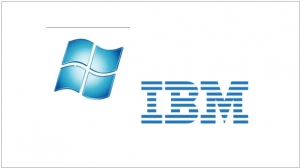
Microsoft has formed partnerships with SAP and Oracle for its cloud-computing platform, and now IBM has joined as the newest partner in Microsoft's enterprise software layer. As part of the agreement, IBM middleware, including WebSphere Liberty, MQ, and DB2, will be accessible on Microsoft Azure, while IBM Cloud will offer Windows Server and SQL Server. Additionally, Microsoft's .NET runtime will be made available on IBM's Bluemix cloud development platform. With these collaborations, Microsoft can proudly claim to have the Big Four integrated into its enterprise-focused cloud platform.

